
The Softears RSV is the new kid on the block. It is an extremely refined 3-way universal IEM with 5BA. I have written an introduction to the manufacturer and their products here. The RSV is the company’s cheapest model yet. The local price in China is currently around 560 € when bought off Taobao, but considering fluctuations and adding taxes will get you closer to 730 €. In fact, it could be priced at 800 € and it wouldn’t change anything about the review.
Quick Navigation
Reference Sound
The RSV is the latest model by Softears. Since the big reveal at the end of 2018 I’ve been following the company’s success story. Their high-end reference flagship RS10 is being praised to the heavens in their home country. It is an all-BA 5-way CIEM that can also be had as a universal if you are willing to spend 2.000 – 2.200 €.
The RS5 is the much cheaper follow-up. The driver count is reduced and the ambitious 5-way crossover has been streamlined to 3 ways. The RSV definitely profits from the extensive polish that was used on the RS10. RSV’s crossover consists of a 3rd order LRC filter for bass, an impedance + low pass for the midrange, as well as a film capacitor for the high frequencies, totaling in 6 components to properly divide the signal to the 5 drivers per earpiece. Finally, the efficiency has been cramped up from 100 dB to 125 dB/1VRMS at just 8Ω to provide higher dynamics for everyday use.
Build Quality
The looker of the Softears RSV is its unique faceplate. A lacquer protects the symbiosis of gold foil with carbon splitters. It’s a stunning view from close up. My macro lens will pick up tiny scratches on the surface that are otherwise impossible to see, so the IEM actually looks much better in real life than in the photos.
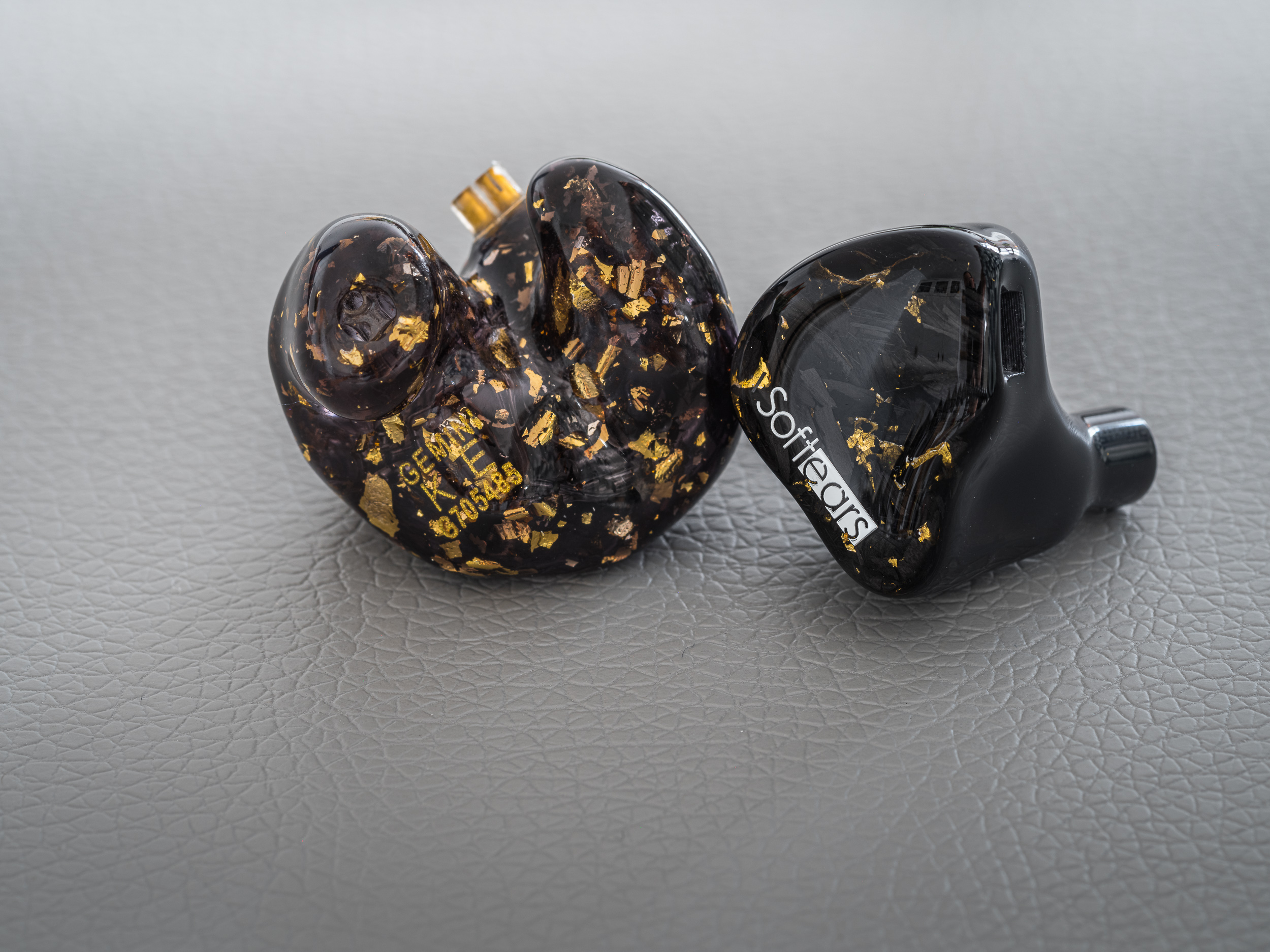
The RSV’s body is handmade through the same process as most custom in-ear monitors are. The universal shell is made from hardened acrylic that is comfortable on the skin and has smooth edges. The body is black but reveals a blue tint under special lighting circumstances. The build complexity might not seem especially challenging in any way, but it is also executed flawlessly.
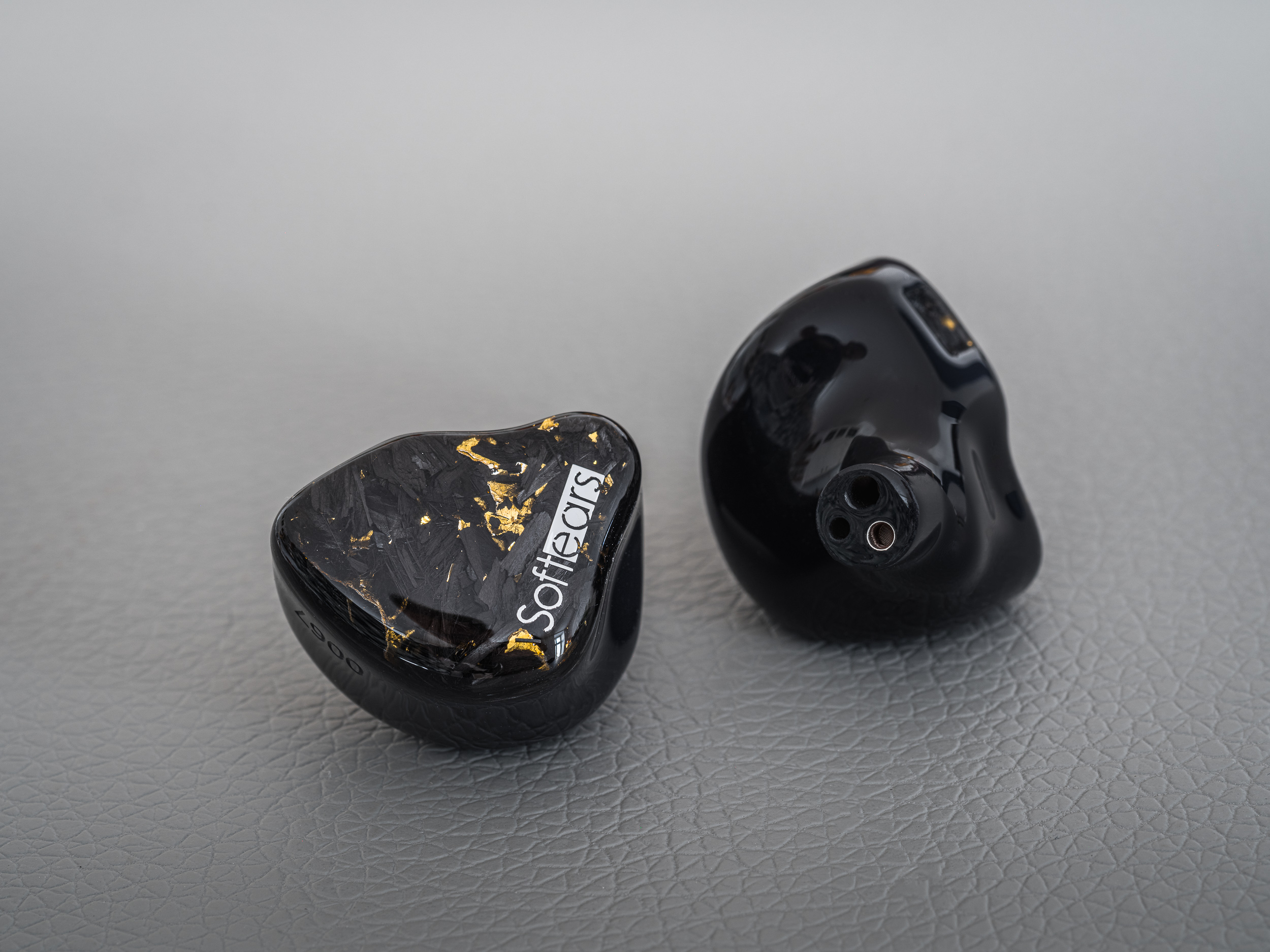
The 3-way design ends in a nozzle with 3 bores. At first, it seemed as if the sound tubes were unprotected, but my macro lens uncovered tiny protection meshes a few millimeters in. Nonetheless, this is a design that could potentially be prone to having cerumen blocking the sound exit. I’d recommend to check for dirt regularly and use the included hook to keep the nozzle clean. In the worst case, the mesh will prevent more serious issues that an IEM vac cleaner could still fix.
Ear Tips
Do note that the nozzle is slightly wider in diameter. You can squeeze 4.5mm ear tips on it, but they’ll probably block parts of the bores. I found the MandarinES Symbio W and SpinFit CP500 to be worthy additions to try out. The JVC Spiral Dots fit nicely too, but they fail to guide the treble with this pairing, IMO. As always, YMMV.
The included bowl-shaped silicone ear tips seem durable, but their surface is rather slippery and stiff. They provide good isolation if one of the 3 sizes fit right, but I ended up swapping them out quite early. Also, the RSV has bowl-shaped foams included. The material is soft and helps with pressure relief. They are definitely worth a try but they muted the bass impact and the treble too much for my liking.
Comfort
I used to praise the InEar StageDiver series for creating the most comfortable universal body. But that was 2013. By now, most manufacturers have caught up and also Softears created a universal shape that can easily keep up. The only issue I see is ear fatigue and a too strong seal. The body of the RSV is fully closed and it sucks right into the ear canal. On the upside, this provides very high isolation if you manage a deep fit. If you are not used to this hardcore-audiophile way of wearing IEM, (custom-) foam tips will be the best option. Actually, I consider the custom-foam option to be even superior to CIEM, especially with the Softears RSV… This is probably worth another article. Remind me should I forget about it.
Cable and Compatibility
In terms of wire gauge, the included cable is of slightly higher audiophile-grade than what you usually get. Two separately shielded wires per side are twisted down to an unbalanced 3.5mm termination. The connections, y-split, and jack plug have black metal parts and gold-plated contact points. Left and right mass are cleanly separated and there is no evidence of crosstalk whatsoever. However, cable microphonics are also an issue here. A slider above the y-split would have been helpful but is not included – a small oversight.
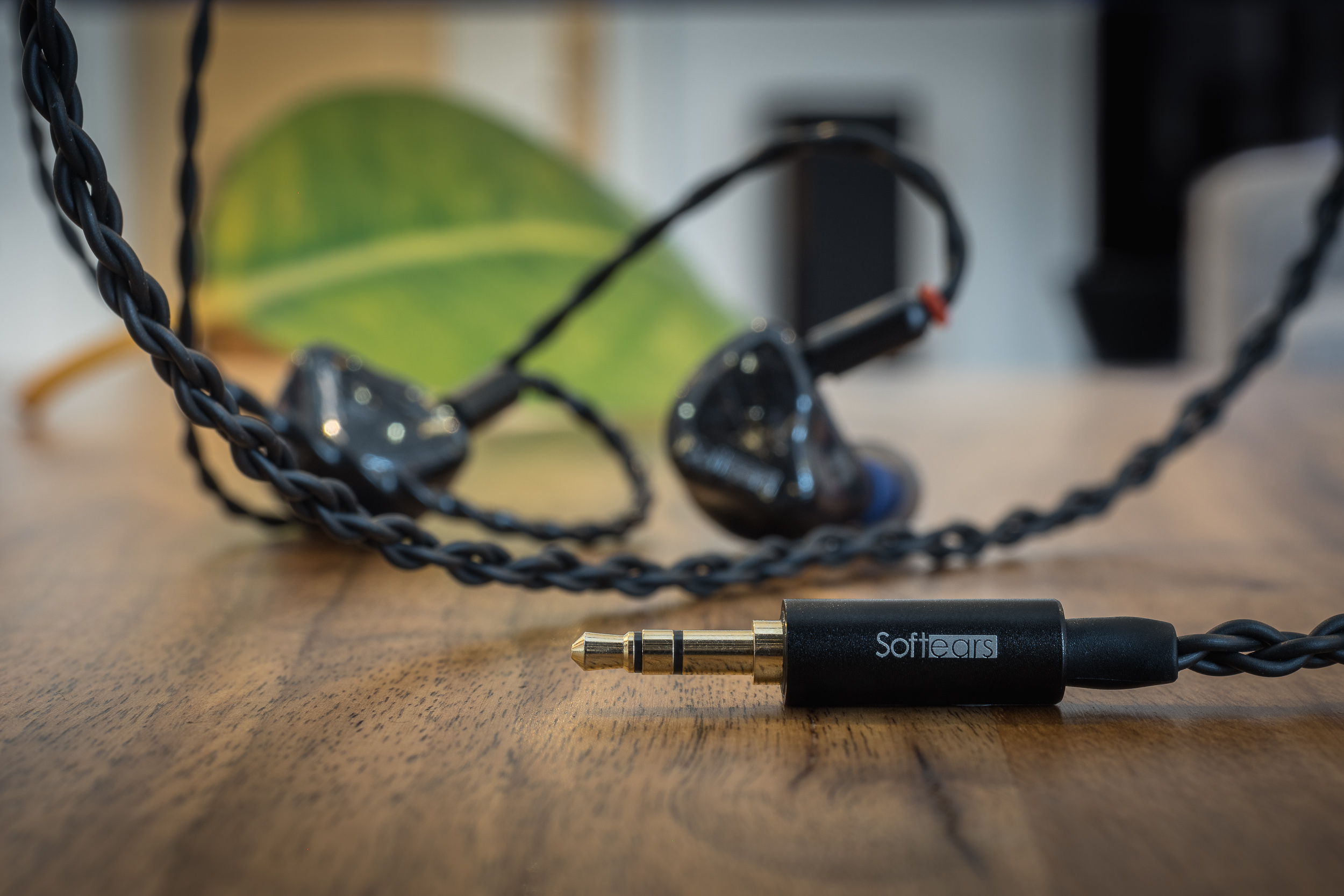
The flexibility is alright and the memory is low enough to not be bothersome in everyday use. I expect the cable can take a beating. Should you be among the more careful users that prioritize sound quality above all else, it could be worth checking out the optional Softears Turboo upgrade cable with swappable plugs for your balanced fix.
Swapping the cable might actually change the sound quality slightly. The Softears RSV is a quite efficient IEM with high dynamics. I could actually measure tonal differences with deviations of just one ohm regarding the output impedance of the source. The RSV sounds far brighter with higher impedance amps. Fortunately, despite the high sensitivity, the RSV does not easily pick up hiss from the amp.
Sound

Tuning
I have already published the measurements and shared early impressions. So I will not cut around the chase: The Softears RSV is one of the best-tuned IEM I have ever come across. How much of that is related to subjective hearing, I cannot say. For over a decade I’ve been sharing impressions and so far I often received feedback that people agree with my perception. (Thank you for the occasional fan mail, btw!) So in this case I hope that I won’t be the only one claiming that the tuning of the RSV is closest to perfect from 100 Hz to 10 kHz as I have never experienced before. The pinnae gain is recreated just the way I like it and it helps that the pressure is reduced after 3 kHz.
Keep in mind, the tuning is in regards to perceived neutrality, in my case at 83 dB SPL. This is completely free from “musicality” or whatever signature works best for a specific type of music genre or recording. Producers have their own handwriting and no release sounds the same. So this is a tuning that works best when mixing and mastering audio or listening to music that has been treated carefully with little effects. At the very least, the RSV will sound accurate with vocals and acoustic instruments.
Outside of this most important frequency range, the RSV features the very popular sub-bass boost. In my opinion, the bass-curve is a passing fad initiated by the Harman-curve. Is it for showcasing technical prowess or does it actually enhance the listening experience? Personally, I can live without it as long as the low-end doesn’t start flapping like a sheet of paper in the wind. But I can’t argue that the majority loves that sub-bass boost and I can’t criticize Softears for following that trend. It will probably help them to score higher ratings across the audiophile community.
At the other end of the frequency response, the Softears RSV rolls off in the treble after 10-12 kHz, depending on fit and ear tips. With any tips I’ve tried, the pressure will rise at 14-15 kHz again, giving back some of the air in recordings. It’s not the smoothest extension ever, but still fairly decent considering this is an all-BA configuration.
One could argue in detail if it possibly were better if the curve around 3 kHz were flatter. Personally, I actually enjoy a slight 2kHz bump if it’s followed by a 3k cut. It softens the recording a bit. But I am also very sensitive to 4-6 kHz and getting the level balanced in the higher mids is a challenge of its own. I can only repeat that Softears is among the best ever to tune (not only) that area. The RSV feels very much right in place next to greats like the InEar ProPhile 8 and 64 Audio U12t in regards to tonality. IMO, its audiophile appeal and refinement surpasses the qdc Gemini and even the whole Etymotic ER SE/XR series.
Bass
Overall, the Softears RSV features great qualities for monitoring. If you want to analyze the audio information, BA drivers (like employed in the RSV) are still the best option to go. However, the tuning of the RSV also enhances the “fun” qualities of the bass. This IEM does indeed pack a punch and also delivers that addicting oomph that drives modern music. So despite the whole neutral aspect discussed earlier, this is actually an earphone that will get your toe thumping to the beat. The great extension is also impressive enough to appreciate the rumble from movie soundtracks.
Thanks to a fast attack and quick decay, the bass rarely seems overdone or pushes itself in front of the midrange. Most of all, there is no bloat or bleeding into the midrange. The bass performance does exceptionally well with fast Metal pieces. The texture is also good, but the shift to the sub-bass region takes away a tiny bit of the very natural sound you might expect from a Classical recording. This is the only time I would clearly favor a more linear bass, for example as with the InEar ProPhile 8 or the company’s own Turii.
However, the bass is also quite fit-dependent. With a fully-enclosed IEM, it is rather easy to create a vacuum with which the IEM sucks itself into the ear canal. In this case, the ear fatigue is quite high and the bass becomes a blurry mess. While this technique works quite well with some IEM designs, I avoid it at all costs with the RSV. Instead, I prefer to use ear tips that isolate a bit less (for example SpinFit) to mitigate the problem. Overall, a few dB less could have been more favorable.
Pro tip: Should the bass impact be below expectation in regards to quantity, check your source and upgrade to an amp with a lower impedance. Higher impedance sources level the bass quantity down a bit.
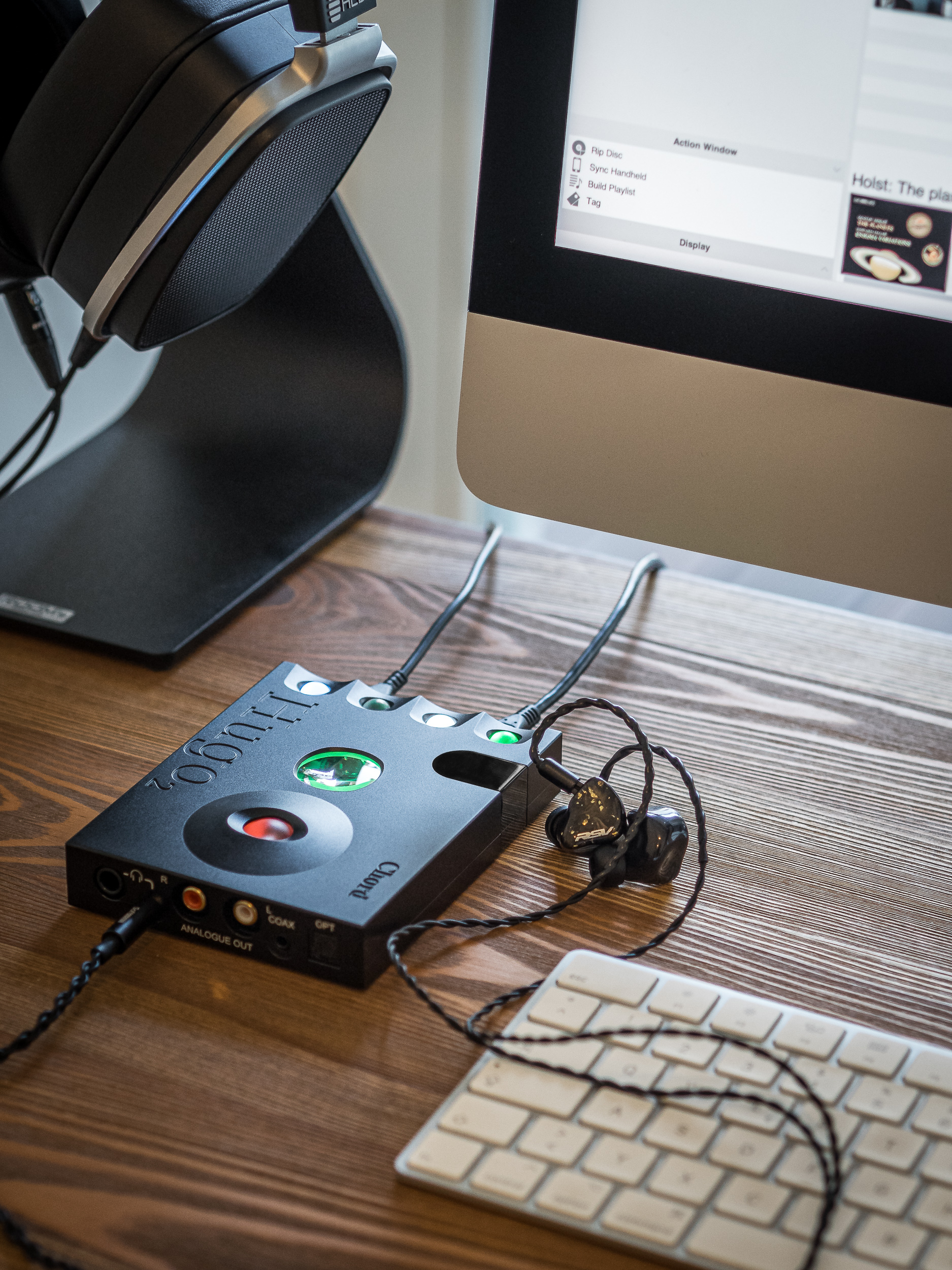
Midrange
Softears has done wonders to get the bass and the treble sounding as good as they do. Yet balanced armatures are still best known for their precision in the middle frequencies and the RSV will definitely not change that perception. For also this IEM’s strength is the extremely accurate midrange. The tonality is spot on and elevates the RSV far above its price range.
Impressive here is not only the accurate tonality but also the sharp separation and precise layering of individual layers. This also translates to amazing imaging with a very convincing soundstage. The RSV’s limitations do not lie within the tonality or even resolution. In my opinion, what is keeping the RSV from the high-end category is the lack of a pressure relief system. The midrange of the RSV is only bested by my A18t or the U12t (both by 64 Audio) because their apex solution creates an incredible sense of space. So even though the RSV has great air around the vocals, the individual layers appear relatively close to one another. Nonetheless, it is worthy of praise how close Softears has come with this “budget” release.
Treble
In terms of treble quantity, Softears yet again follows my subjective target for neutrality better than any other IEM I know. Most impressively there is no single frequency range that appears boosted. Not even sweeping carefully with a sine tone generator I could make out any dips.
Unsurprisingly, this refinement translates well into audio reproduction. Every instrument is rendered realistically with having just the right balance of fundamentals and harmonics. The appreciation here lies within the details. Of course, the wow-factor will be greater with an upfront cymbal splash, but you won’t get that with the RSV. There is just a little sparkle and natural shimmer that you can catch in the background.
Compared to InEar ProPhile 8’s stronger definition and 64 Audio tia Fourté’s impressive treble, the RSV seems a bit flat and matte. But it’s also never the case I thought that a trumpet lacked energy or the strings of a violin sounded off. Cymbals splash and crash just as expected. The lack of deviation is what is most impressive here.
While the extension is great, the RSV fails to effortlessly recreate the very high frequencies that only consist of overtones. This is not a trait I’d ascribe to the RSV but a common characteristic of balanced armatures.
Soundstage and Resolution
Hand on heart, I couldn’t guess the number of drivers employed in the RSV. I would have guessed the quantity to be much closer to the ProPhile 8 and Gemini (8 each). No, I do not want to imply that a higher driver count implies better resolution, but of course, this is expectation manufacturers use at least when setting a sales price for their designs. What I am trying to say is that the RSV is very transparent and does a very good job at unfolding an audio’s track in various layers.
Also, the imaging is top-notch. I never found an instrument to be positioned where I would not have expected it to be. For me, the soundstage of many headphones and IEMs are often diffuse. Instruments seem to float high or come from down low. But this is not the case with the RSV. Everything is level and has a very clear position in the stereo level. Again, what’s missing here for the ultimate sonic bliss is the sheer size of the soundstage which is rather closed-in and compact. It’s not until I close my eyes that the soundstage expands to the amount I need to get that audiophile kick.
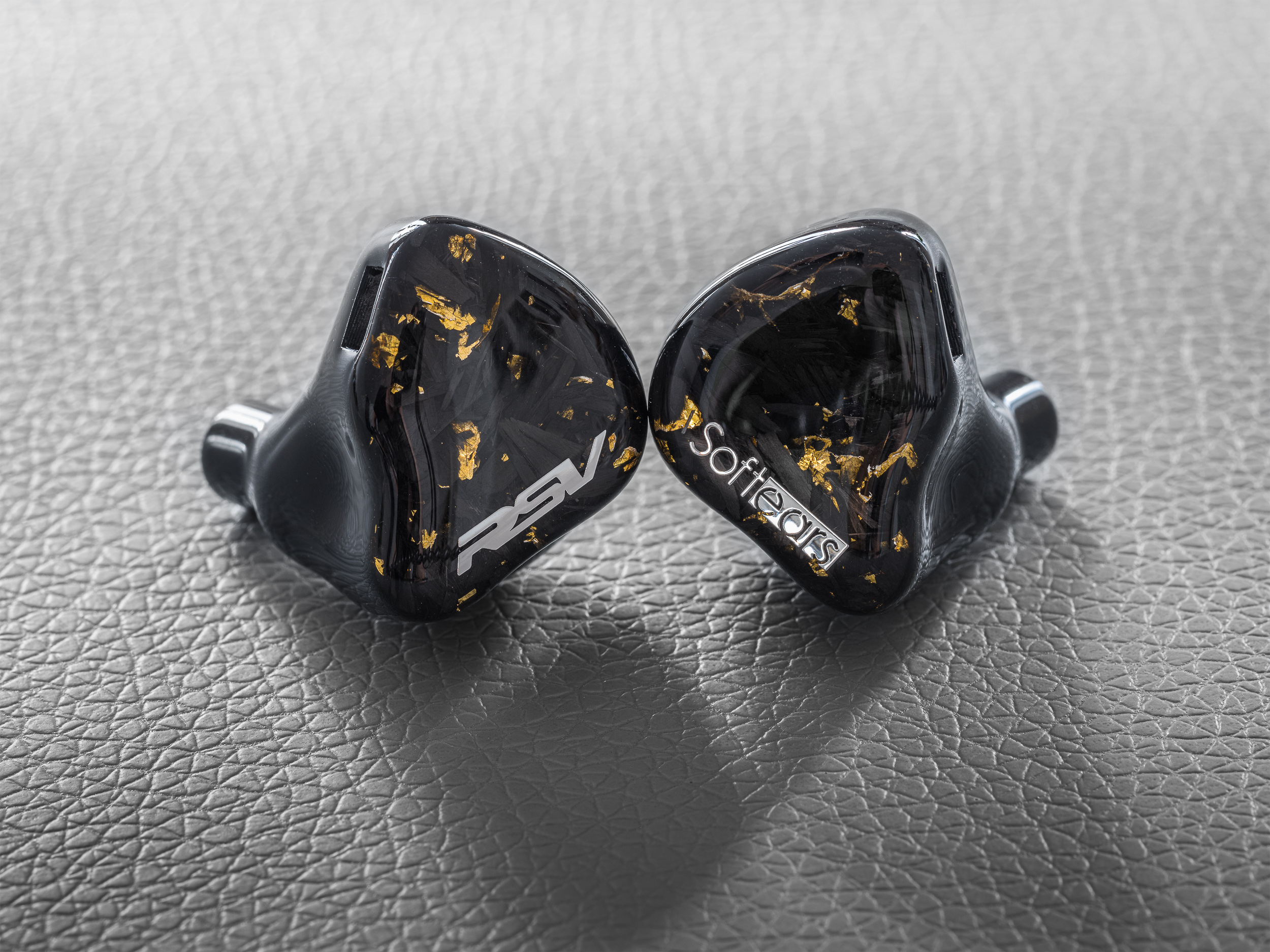
Verdict
What a jaw-dropping surprise! The Softears RSV is in its own right the most impressive IEM release I have experienced in years. As far as fully sealed all-BA universal IEM designs go, I think Softears pretty much hit the limit cap and ticked as many boxes as possible. The RSV is a well-built, very comfortable, and beautiful universal IEM with flawless execution in regards to tight and dynamic sound that is suitable for monitoring and enjoyment. Though not related in any kind, this is a true “ProPhile” by merging audiophile qualities with professional demands.
I am not saying that there can’t be any more improvements – because there can! In detail, the RSV doesn’t have the texture quality of other high-end BA designs or some of that amazing high frequency sparkle found in the reference class. Most of all, I am missing a pressure relief system that creates just overall more space to match the sharp separation and layering. But let’s not forget that the RSV is the little brother of the RS10, which promises to deliver on all of that. What kind of beast must Softears have created at three times the costs!?
Make no mistake, the Softears RSV is not a “Chi-Fi” earphone that tries to pack as many drivers into the housing as possible. It also does not blindly follow the Harman-target. There is just so much polish and sense for audio re-creation put at show here that it’s impossible the RSV turns out to be a one-hit wonder. (Saying that, I am also hinting at the upcoming Turii review.) Especially considering the price of 800 € or less, the value proposition is fantastic. Long story short, the Softears RSV is an incredible offering for any serious audiophile that appreciates IEM! Even if the InEar ProPhile 8 or Etymotice ER4 XR were not to your satisfaction, give this one a shot anyway.
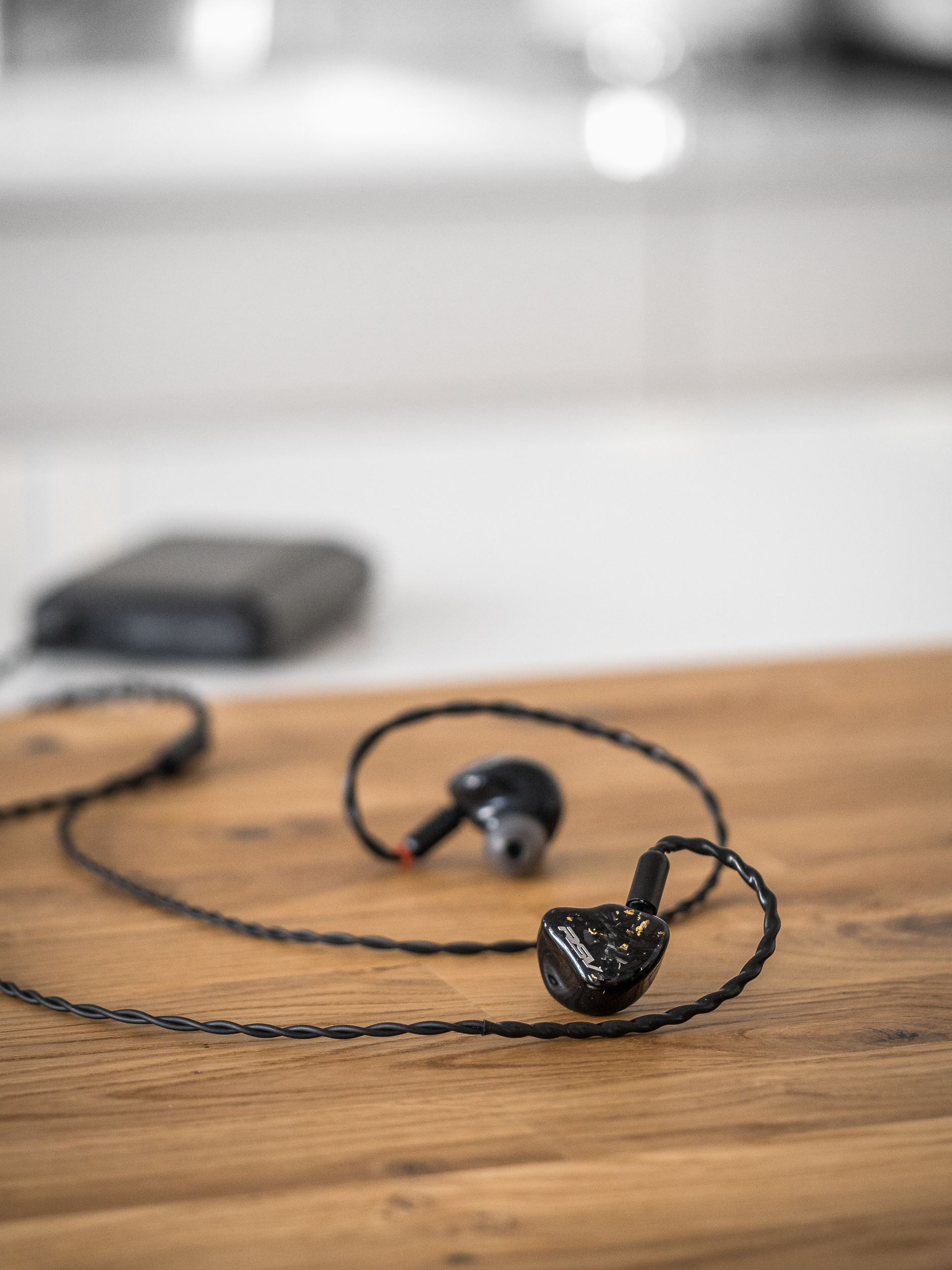
As always, if you want to see more photos, follow me on Instagram.
@16BitAudiophile

Do you have a link to where you bought your measurement coupler?
Hi Rudise,
sorry, I do not have a direct link to the IEC 60318-4. I have used contacts to aid me get one and imported it.
Hello Klaus,
Thank you for your reply.
That’s unfortunate, as I would like to get a good and accurate IEC711-compliant measurement coupler myself, but don’t know which AliExpress and Taobao vendors and products are actually trustworthy or not, as based on previous experience, many promise a lot but the product one receives is then either not as good as advertised, misses some of the features that were promised, or differs quite dramatically from what is shown on the product page/photos.
Best regards.
If you could only have either the HEDDphone or the Softears RSV which would you choose, thanks.
Hi Ray,
unfair question! I hope my boss (or team) isn’t reading, but I personally would go for the RSV. 😅 For portability, of course.
If you are asking for sound quality alone, I guess HEDDphone is pretty much up at the top in regards to accuracy, transparency, and soundstage. I wouldn’t mind less weight and a less bulky design, though.
But for me personally, I would always choose IEM over HP.
Thanks for your response, in terms of technical performance do you know of any IEM that can perform at or near to what the HEDDphone can?
Please provide some comparisons in the similar price bracket like you provided under the EST112 thread.
Hi Ace,
sure, I’d love to. Any particular IEM you are interested in?
I so appreciate this review. Thank you for the detail and the style. I’ve got nothing all BA in my collection. Looks like this is going to be it.
But if you look at your collection of IEMs, which one is top of your list and where does RSV sit in postion from 1st, 2nd in terms of your favorite.
Vielen Dank!